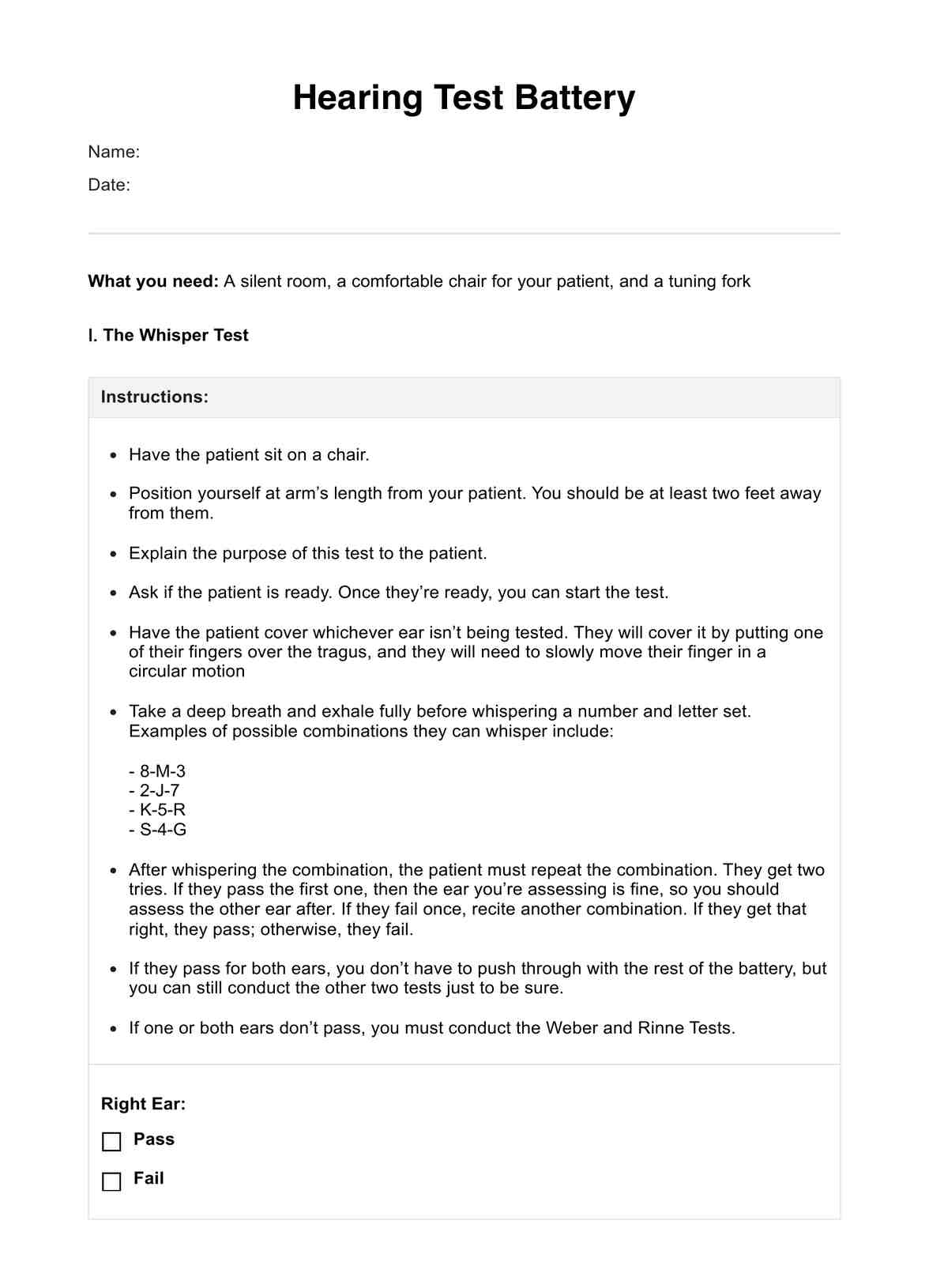No. However, the Weber and Rinne tests should determine what type of hearing loss the patient has and determine which part of the ear is related to the hearing loss.

Hearing Test Battery
Conduct the Hearing Test Battery on patients with hearing problems to gauge their risk of becoming deaf. Learn more about this through this mini-guide!
Use Template
Hearing Test Battery Template
Commonly asked questions
No. The tests under this test battery are non-invasive.
Check for earwax of fluid blockage first. If their ears are clean, it’s best to conduct further examination to determine why the hearing loss is significant.
EHR and practice management software
Get started for free
*No credit card required
Free
$0/usd
Unlimited clients
Telehealth
1GB of storage
Client portal text
Automated billing and online payments











